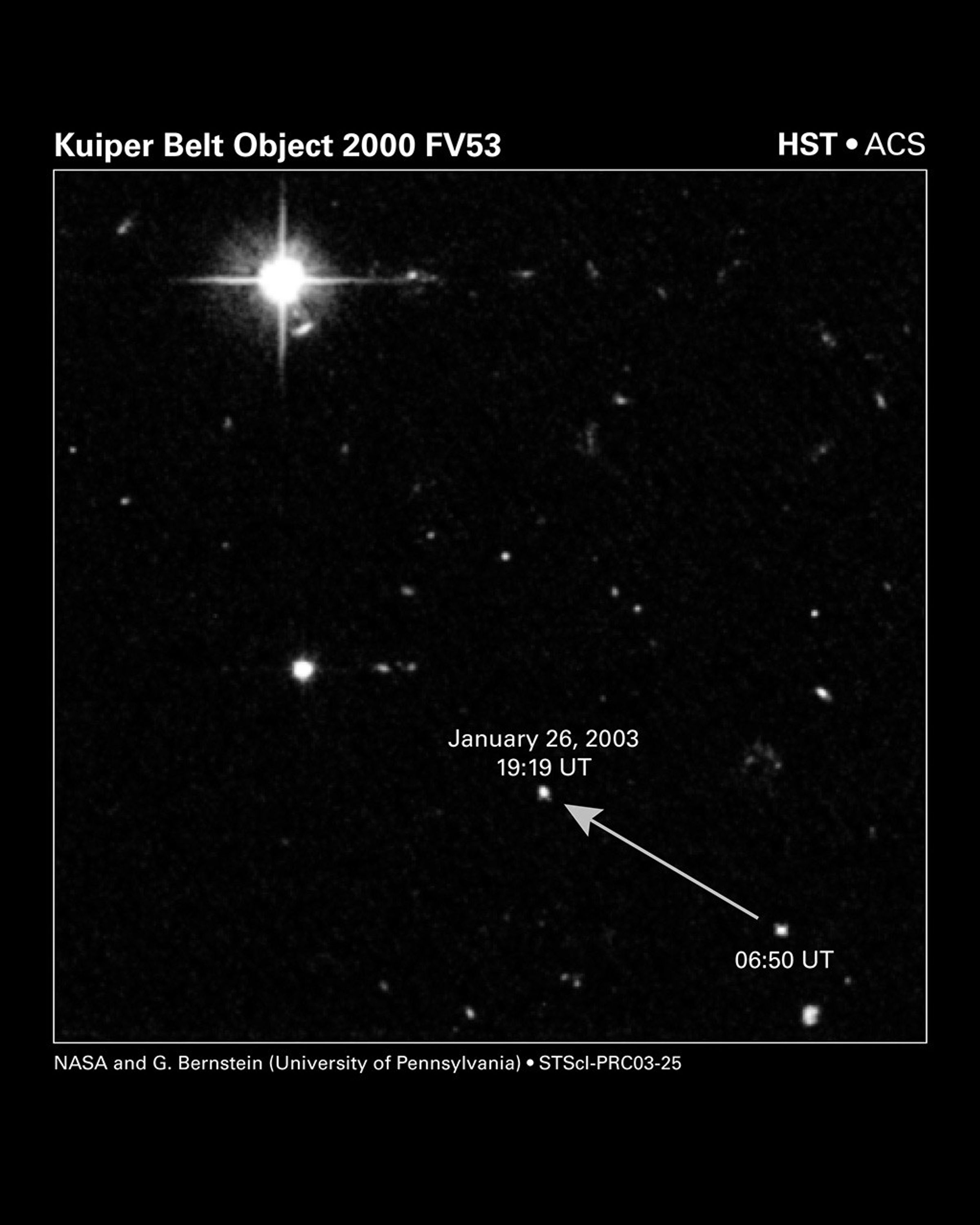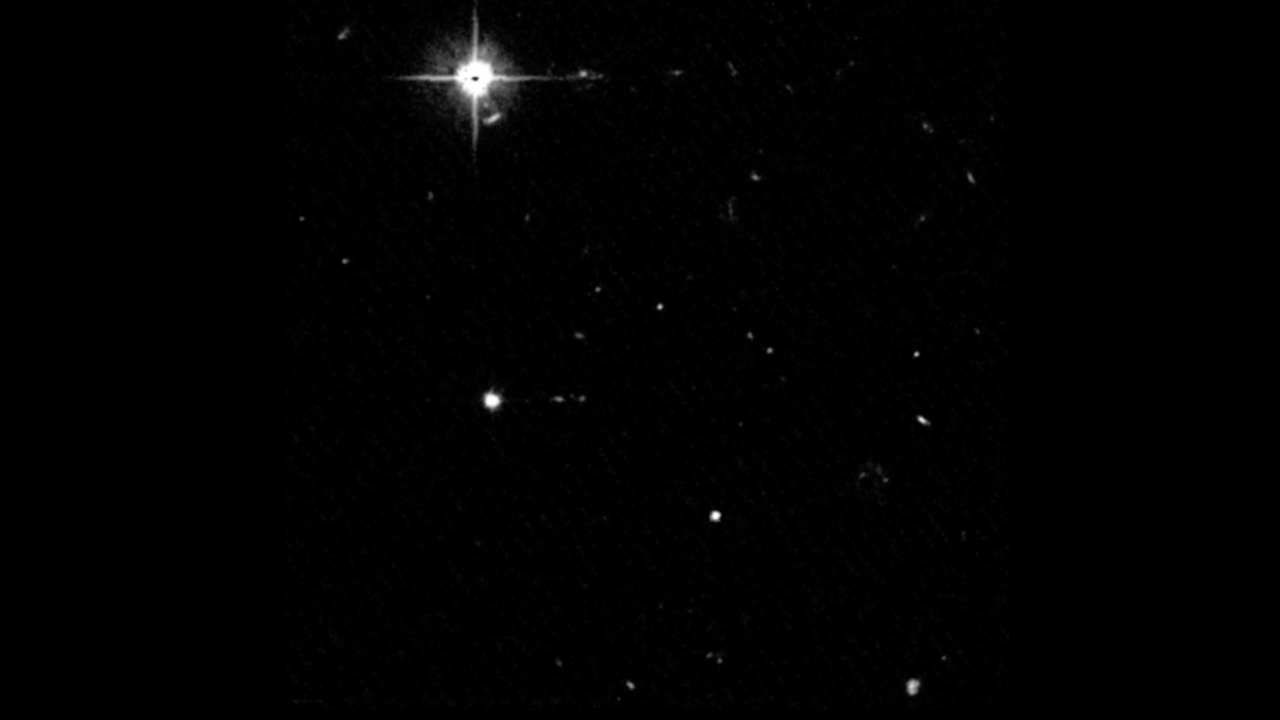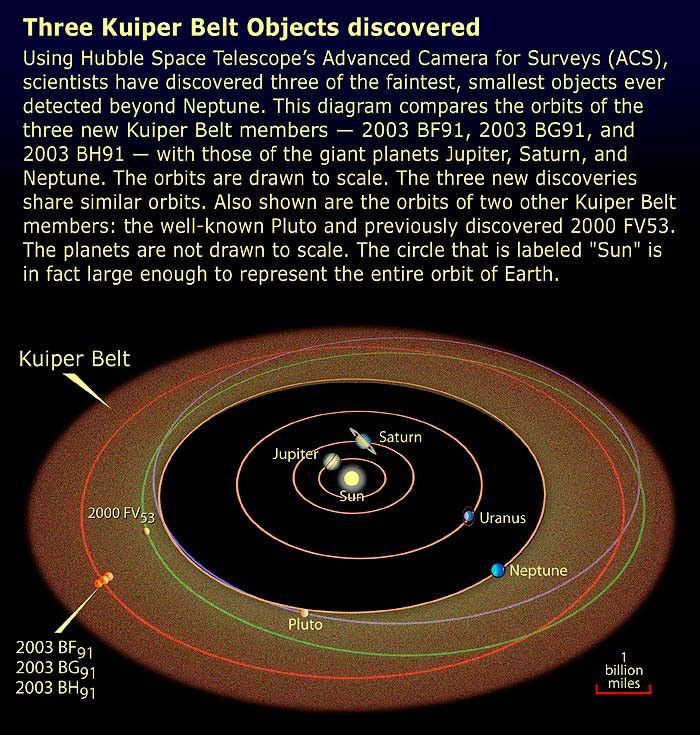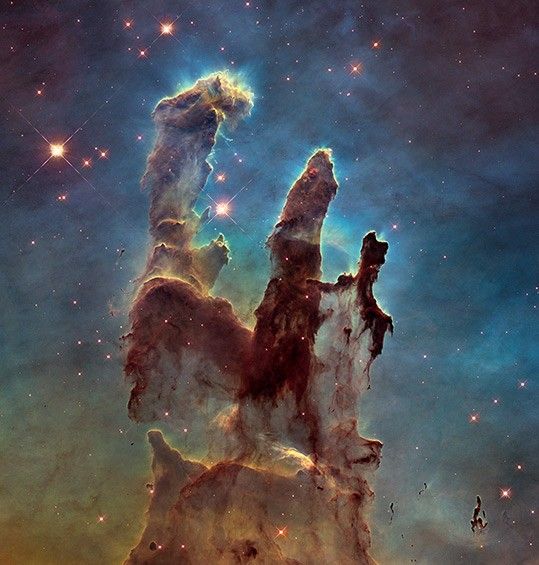1 min read
Icy Kuiper Belt Objects Orbit Beyond Pluto and Neptune

About the Data
- Data DescriptionData DescriptionProposal: A description of the observations, their scientific justification, and the links to the data available in the science archive.
Science Team: The astronomers who planned the observations and analyzed the data. "PI" refers to the Principal Investigator.This image was created from HST data from proposal 9433: G. Bernstein and D. Trilling (U. Pennsylvania); R. Malhotra (U. Arizona); L. Allen (U. British Columbia); M. Brown (Caltech); and M. Holman (Harvard-Smithsonian CfA) - InstrumentInstrumentThe science instrument used to produce the data.HST>ACS/WFC
- Exposure DatesExposure DatesThe date(s) that the telescope made its observations and the total exposure time.January - February 2003
- FiltersFiltersThe camera filters that were used in the science observations.F606W (Wide V)
- Object NameObject NameA name or catalog number that astronomers use to identify an astronomical object.2000 FV530 2003 BF91, 2003 BG91, and 2003 BH91
- Object DescriptionObject DescriptionThe type of astronomical object.Kuiper Belt Objects
- Release DateSeptember 6, 2003
- Science ReleaseFarthest, Faintest Solar System Objects Found Beyond Neptune
- CreditNASA, G. Bernstein and D. Trilling (University of Pennsylvania)
Related Images & Videos

Kuiper Belt Object 2000 FV53
Two snapshots, taken 12 hours apart, were combined to produce this Hubble Space Telescope image of a Kuiper Belt object (named 2000 FV53) moving across the sky. Hubble's Advanced Camera for Surveys tracked the object on Jan. 26, 2003. Like all the planets, this solar-system...

Successive Frames Showing KBO 2000 FV53 Moving Across the Field
This series of images from the Advanced Camera for Surveys shows a Kuiper Belt object (2000 FV53) moving across the sky on 26 January 2003. Like all planets, this Solar-System member appears to move relative to the fixed stars and galaxies in the background. This particular...
Share
Details
Last Updated
Aug 17, 2025
Contact
Media
Claire Andreoli
NASA’s Goddard Space Flight Center
Greenbelt, Maryland
claire.andreoli@nasa.gov






























